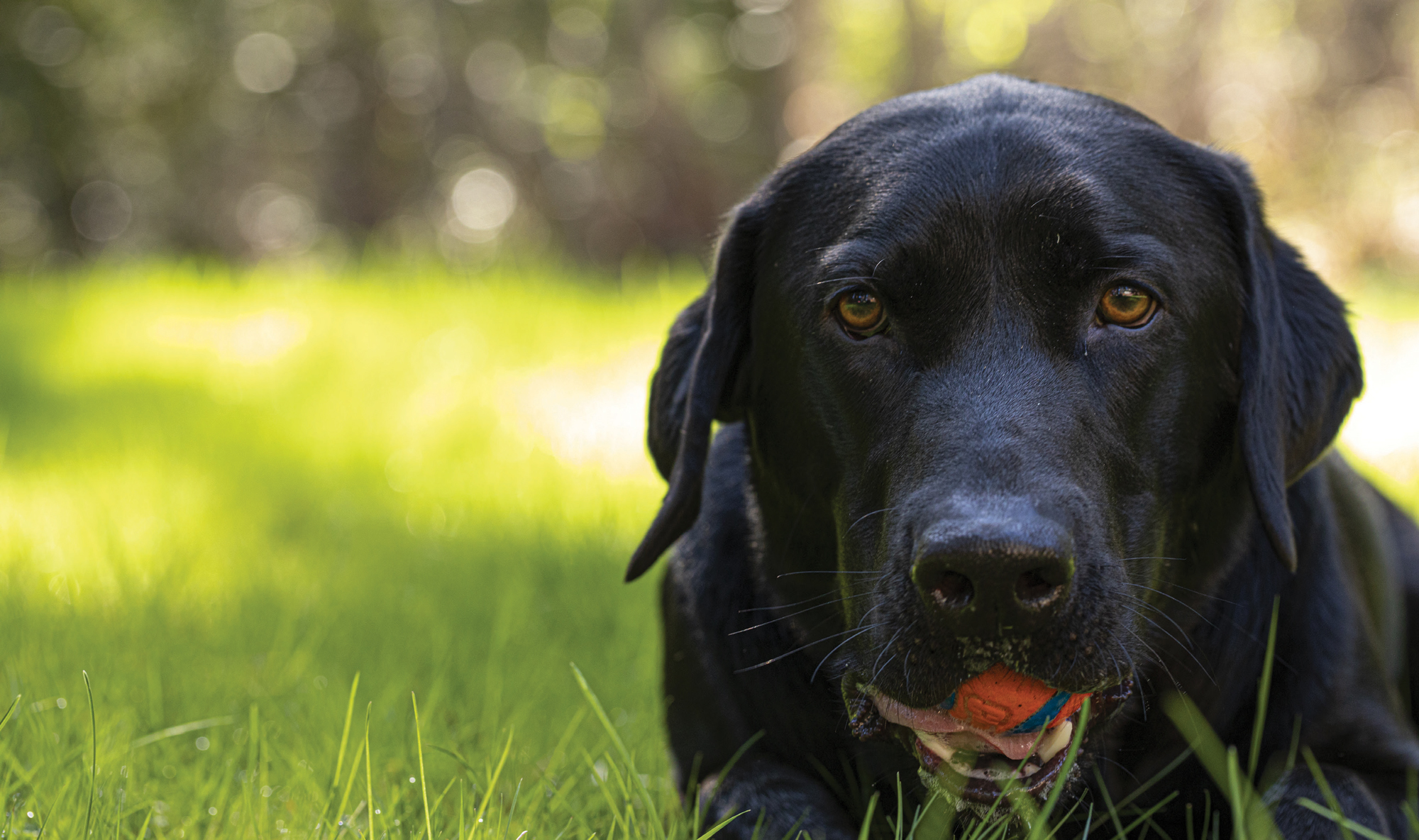Unleashed Unleashed Unleashed
UW’s Conservation Canines calls on dogs’ superpowers to sniff out answers to pressing environmental questions.

UW’s Conservation Canines calls on dogs’ superpowers to sniff out answers to pressing environmental questions.
On a blustery March afternoon in Seattle’s Ballard neighborhood, Jasper, a 3-year-old black Labrador retriever, furiously sniffs the side of a vintage boutique. Snout twitching, the dog noses along the row of storefronts and restaurants.
But this is no ordinary walk in the neighborhood, and Jasper is no ordinary pup. He’s a specially trained environmental detection dog with the University of Washington’s Conservation Canines program at the Center for Conservation Biology. At the other end of Jasper’s leash is handler Julianne Ubigau, who guides him and closely watches his body language.
Jasper is helping Seattle Public Utilities identify possible sources of polychlorinated biphenyls (PCBs). These banned industrial chemicals can cause cancer and other harmful health effects on humans and wildlife. (To keep Jasper safe, he’s regularly tested.) Because PCBs are invisible and odorless to most humans, SPU turned to Jasper’s powerful sense of smell for assistance.
Detection dogs like Jasper have been tracing explosives and narcotics for decades. But how did they become specially trained to track wildlife scat, invasive plants and chemicals for Conservation Canines?
In 1997, UW Research Professor Samuel Wasser’s biology lab was extracting DNA and hormones from wildlife feces, or scat—a technique that allows researchers to study a species’ diet, behavior and health without disturbing the animals. When Wasser heard dog handlers describe their scent-training techniques, he saw an easier way to find those samples—and Conservation Canines was born.
So what makes a good detection dog? Boundless energy, a willingness to work and a singular focus on playing with a ball as a reward. The dogs can cover 10 times more area than humans and make the sampling process more thorough and unbiased. “It’s totally independent,” says Wasser, who holds an endowed chair in conservation biology. “If the dogs smell it, they’ll work to find it, because nothing is more important than getting their ball.”
This ball-reward system has been a success. Conservation canines have tracked down endangered tigers in Cambodia, monitored the health of Southern Resident killer whales off the San Juan Islands and proved that human activity—not wolves—was causing a decline in the caribou population in the Alberta oil sands. The program currently has five dogs, each working and living with their handler in the Seattle area.
While the dogs were primarily trained to find scat samples, the training techniques are now being adapted for less- visible substances like PCBs. To find the right dogs for the job, Wasser’s team heads to local shelters.

Handler Julianne Ubigau and Jasper are helping Seattle Public Utilities identify sources of harmful chemicals across the city,
When Ubigau, the Conservation Canines education and outreach coordinator, first met Jasper two years ago, the energetic pup was pawing through the kennel fence to get to a bucket of tennis balls beyond his reach. She knew he’d be perfect for the program.
Within three months, Jasper was bounding through the backcountry and finding scat from cougars, bobcats, wolves and coyotes, his motivation an orange-and-blue ball.
The dogs are quick learners, and they sharpen their detection skills at the UW’s Pack Forest: a 4,300-acre site near Mount Rainier for public recreation and field research. In a controlled indoor environment, dogs are introduced to samples of what they’ll be trained to smell: animal scat, invasive plants, wildlife contraband and PCBs.
To build a scent profile for each type of target, the dogs sniff a sample and are then led to a series of 10 bowls, only one of which contains the same substance. A positive response earns them playtime with the ball. Challenges get more complex until finally the dogs are tested in the field.
“My job is to get creative and set up a training scenario so the dog can understand what we’re asking of them,” says Ubigau. “I’m an interpreter—I communicate back to the researcher what the dog is trying to tell me.”
Since 2016, Conservation Canines has partnered with Seattle Public Utilities to track PCBs, toxic chemicals once found in everything from electrical transformers to caulking. They’re said to have no known smell, but SPU source control inspector Mike Jeffers often detected a sweet, chlorinated scent. He wondered if a dog could do the same—possibly at lower levels of concentration.
Because PCBs were widely used until being banned in 1979, they’re found across the city—and the nation. When they get into soil or water, they find their way through the food chain into humans and animals. Studies have shown that PCBs can cause cancer, suppress the immune system and affect reproduction.
After a successful pilot study, SPU and Conservation Canines have done several surveys, primarily along the Lower Duwamish Waterway—a designated Environmental Protection Agency Superfund site, where PCBs from old industrial sources may have seeped into the ground or river.
When Jasper detects PCBs, as he does on this day in Ballard, SPU coordinates with the property owner and state and federal agencies to clean up the site. The trained dogs often detect previously unknown sources, making Conservation Canines an integral part of the fight to remove harmful chemicals from the environment.
For Jasper, it’s just another day on the job—and another chance to play with his beloved orange ball.